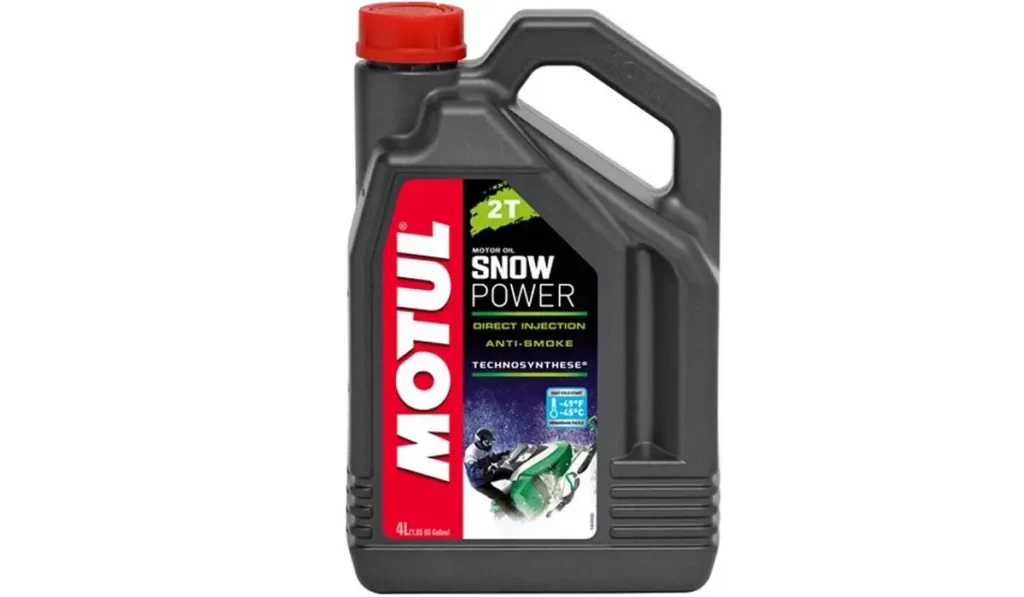When it comes to the exhilarating world of snowmobiling, there’s more than meets the eye – or, in this case, the tracks. Behind the raw power and breathtaking trails lies a delicate yet crucial element that often goes unnoticed — 2-stroke oil. Much like the heart and soul of a snowmobile’s engine, the choice of 2-stroke oil plays a pivotal role in determining the overall performance, efficiency, and longevity of your snowmobile.
In this comprehensive snowmobile 2-Stroke oil guide, we delve into the intricate details of why selecting the right 2-stroke oil is paramount for both novice riders and seasoned enthusiasts alike. Whether you’re a weekend warrior seeking the thrill of untouched snow or a dedicated snowmobiler who lives for the roar of the engine, understanding the nuances of 2-stroke oil is your key to unlocking the full potential of your snowmobile.
Throughout this guide, we’ll unravel the inner workings of 2-stroke engines and the indispensable role that oil plays in keeping them running smoothly. We’ll navigate the maze of oil formulations, viscosities, and API ratings, helping you decipher the complex world of snowmobile lubrication. Let’s get started!

Understanding 2-Stroke Engines and Oil
Snowmobile engines are marvels of engineering, harnessing a potent blend of power and agility to conquer the snow-covered landscapes. At the core of these engines lies the 2-stroke design, which operates on a simplified combustion cycle involving just two strokes – the compression stroke and the power stroke. Unlike their 4-stroke counterparts, 2-stroke engines lack a separate oil reservoir. Instead, they rely on oil mixed directly with fuel to provide crucial lubrication, making the choice of 2-stroke oil a critical decision.
In a 2-stroke engine, the crankcase and cylinder share a common space, and the upward movement of the piston compresses the air-fuel mixture. Upon ignition, the rapidly expanding gases drive the piston downward, generating the engine’s power. This dynamic process necessitates continuous lubrication to reduce friction, prevent heat buildup, and ensure the longevity of vital components.
The Role of 2-Stroke Snowmobile Oil
Imagine the internal components of a snowmobile engine working in harmony, each piece moving with precision and efficiency. This seamless dance is made possible by 2-stroke oil, which performs a multi-faceted role in the engine’s operation. Firstly, 2-stroke oil lubricates moving parts, creating a protective barrier that reduces friction and minimizes wear and tear. This not only enhances the engine’s performance but also extends its lifespan.
Secondly, 2-stroke oil plays a crucial role in cooling the engine. As the oil circulates, it absorbs heat generated during combustion and carries it away from critical areas, preventing overheating and potential damage. This dual-action of lubrication and cooling ensures that your snowmobile’s engine operates optimally even in the most demanding conditions.
Impact of Temperature on Snowmobile 2T Oil
Temperature is a silent yet influential factor that significantly affects the performance of your snowmobile’s 2-stroke oil. As you embark on winter escapades across varying climates, understanding the interaction between temperature and oil is essential.
Cold Weather Challenges
In frigid conditions, the viscosity of 2-stroke oil tends to increase. Thicker oil can struggle to flow through the engine, potentially leading to inadequate lubrication during start-up. This can result in increased wear and tear on engine components. To counteract this, consider using oil with lower viscosity or additives designed to enhance cold-weather flow.
Adapting to Fluctuating Conditions
Snowmobilers often encounter rapidly changing weather conditions, from icy mornings to sunny afternoons. Adapting your oil choice based on temperature variations can optimize engine performance. Semi-synthetic or synthetic oils, formulated to maintain consistent viscosity across a wide temperature range, can be particularly advantageous.
Factors to Consider When Choosing 2-Stroke Oil

As you embark on the journey to select the perfect 2-stroke oil for your snowmobile, you’ll encounter a range of oil formulations, each with its own set of advantages and considerations. These formulations include mineral, semi-synthetic, and synthetic oils.
- Mineral Oil — These traditional oils are derived from crude oil and offer adequate lubrication. While they may be budget-friendly, they tend to break down more quickly under high temperatures and demanding conditions.
- Semi-Synthetic Oil — Combining the best of both worlds, semi-synthetic oils blend mineral oil with synthetic additives. This results in improved performance and longevity compared to pure mineral oils, making them a popular choice for many snowmobile enthusiasts. Our Motul Snowpower 2T 2-stroke oil goes a step further combining our Technosynthese technology and a special formulation designed to keep your snowmobile going strong in adverse conditions.
- Synthetic Oil — Engineered for exceptional performance, synthetic oils are designed to withstand extreme temperatures and offer superior lubrication and protection. They maintain their properties over a longer period, making them a premium option for high-performance snowmobiles. Motul Snowpower Synth 2T 2-stroke oil features our EsterCORE base oils, making it one of the most advanced synthetic oils on the market. With EsterCORE, your snowmobile is protected, lubricated, and equipped to handle any adventure you embark on!
Viscosity and API Ratings
When it comes to 2-stroke oil, viscosity and API (American Petroleum Institute) ratings are critical factors to consider. Viscosity refers to the oil’s resistance to flow, and choosing the right viscosity ensures optimal lubrication across a wide range of temperatures. Snowmobile engines operate in varying conditions, so selecting an oil with the appropriate viscosity rating is essential for consistent performance.
API ratings indicate the oil’s quality and its ability to meet specific industry standards. These ratings help you gauge the oil’s suitability for your snowmobile’s engine. Look for oils with API TC or better ratings, as they ensure proper lubrication and protection.
Maintenance Tips for Using 2-Stroke Oil

One of the most critical aspects of using 2-stroke oil in your snowmobile is getting the oil-to-fuel mixing ratio right. This ratio determines the amount of oil that mixes with the fuel to provide lubrication and cooling for the engine. Different snowmobile models and manufacturers may have varying mixing ratio recommendations, typically ranging from 40:1 to 50:1 (fuel to oil).
To achieve the correct ratio, measure and mix the oil and fuel accurately. Inaccurate mixing can lead to inadequate lubrication or excessive oil buildup in the engine, both of which can harm engine performance. Consult your snowmobile’s manual or the manufacturer’s guidelines to determine the appropriate mixing ratio for your specific model.
Storage and Handling
Proper storage and handling of 2-stroke oil are crucial to maintaining its effectiveness and performance over time. Keep the following tips in mind:
- Store oil containers in a cool, dry place, away from direct sunlight and extreme temperatures.
- Ensure that oil containers are tightly sealed to prevent moisture from entering, which can lead to oil degradation.
- Use a dedicated and clean measuring container for mixing oil and fuel to avoid contamination.
- If you don’t use your snowmobile regularly, consider using a fuel stabilizer to prevent fuel and oil deterioration during storage periods.
Regular Inspections
Consistent maintenance and inspections play a key role in preserving your snowmobile’s engine health. Regularly check:
- Oil levels — Monitor the oil reservoir to ensure it’s at the appropriate level before each ride.
- Oil quality — Examine the oil’s color and consistency. If the oil appears dark or has a burnt smell, it may be time for an oil change.
- Spark plugs — Fouled, or worn spark plugs can affect engine performance. Replace them as needed.
- Exhaust smoke — Abnormal levels of smoke may indicate an issue with oil combustion. Address any unusual smoke promptly.
Keep Your Snow Adventure Going with Motul
As the snow-covered trails beckon, and the excitement of snowmobiling calls your name, remember that beneath the exhilarating rush lies the heart of your machine – the engine. The snowmobile 2-stroke oil guide has explained the essential role that 2-stroke oil plays in maintaining the performance, reliability, and longevity of your snowmobile. By choosing one of our 2-stroke oils designed specifically for snowmobiles, you are giving your snowmobile the support it needs to get you to your destination reliably!





